|
|
 |
|
| ZIGGY DISPLAYING |
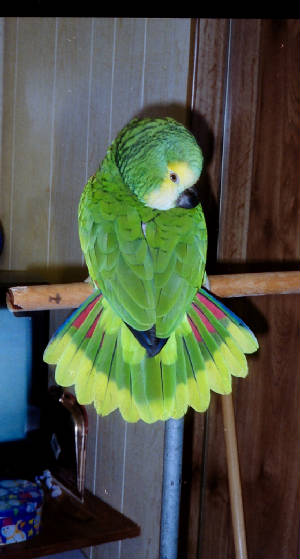
|
| IGNORE A PARROT'S WARNING AT YOUR PERIL |
| GSE (Grapefruit Seed Extract) |
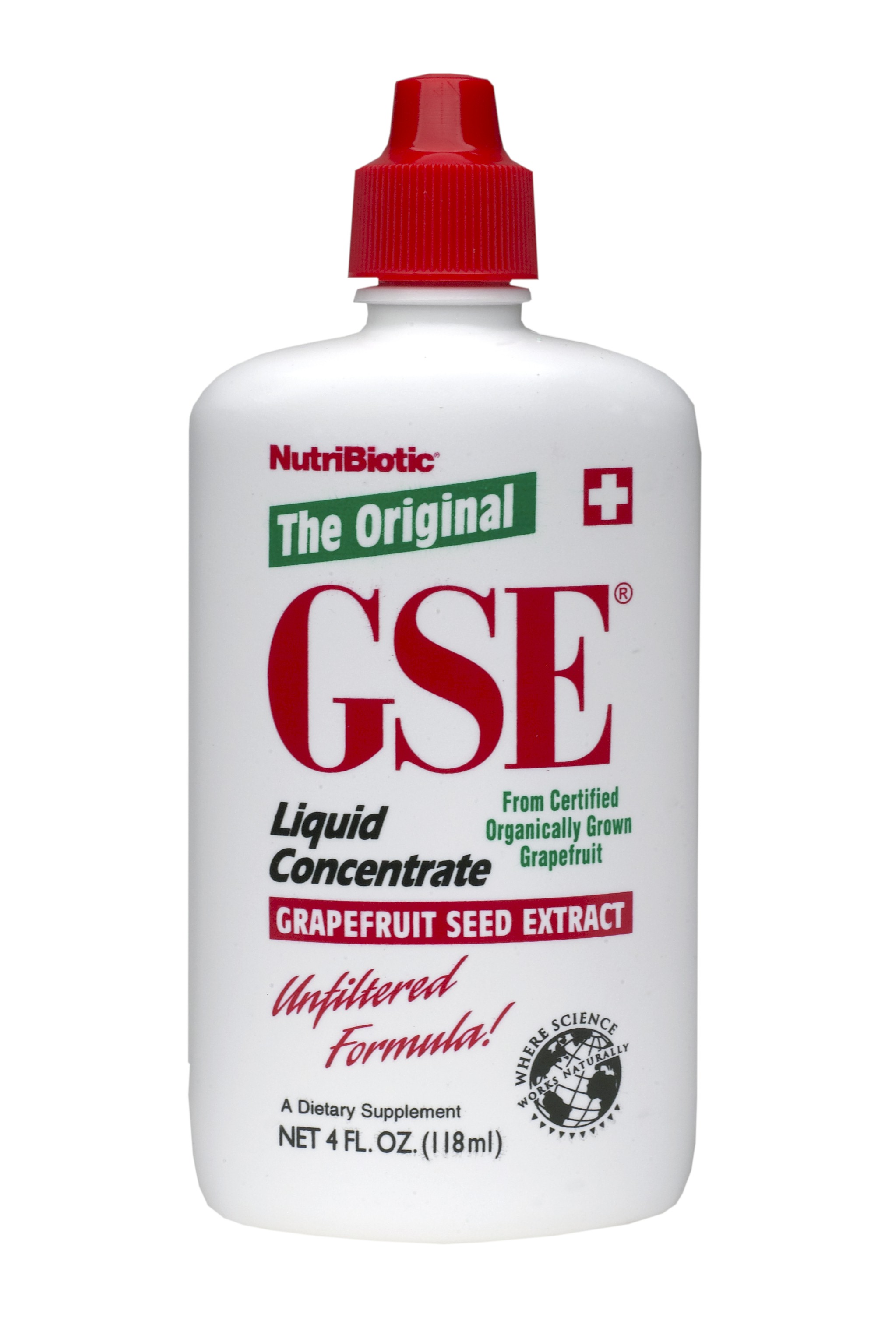
|
GSE--Grapefruit seed "extract"
I used to think that GSE as a safe germicide, without
thinking. Note the quote marks around the word "extract": they are there for a reason: what is sold as "extract" is generally
not an extract per se, but a derivative of an extract. The difference is crucial. Actual unprocessed extract of grapefruit seeds has VERY little germicidal activity, but it does contain
useful phytochemicals, as do many other varieties of seeds, such as grape seeds. Unfortunately, what is sold as GSE is,
in reality, a chemical derivative that merely used grapefruit seed as a starting material. I consider that to be
deceptive. It is possible, for instance, to make plastic from milk (from its casein), but it would be ludicrous
to refer to such plastic as "milk extract"--yet that's exactly the same thing as what the GSE manufacturers are doing. Although
what is marketed as grapefruit seed "extract" IS an effective germicide, it is VERY caustic, and can irritate mucous
membranes. It should never be given directly to a bird. It CAN be used in the bird's water, but at only at a SAFE DILUTION. If you insist on using it, I would suggest 1
drop per 16 ounces of water. Do NOT use more. The Gabriel Foundation warns against using it also. I discovered
how caustic it is accidentally, when I was receiving cancer treatment in 2004. My gums were so sensitive that I could
not use toothpaste, so I tried a dilute solution of GSE and found it to be almost like swishing my mouth out with lye.
I am not saying not to use it: it is perfectly good for
cleaning fruit, produce, things like pomegranate arils if you want to store them, as well as for cleaning cage and other surfaces.
I used to think it was okay because I "thought" that it was just grapefruit seed extract, and citrus seeds do contain
numerous useful phytonutrients. I do use such extracts in cooking (usually by adding a dose to a casserole, which
keeps it from providing a megadose to an individual serving), and the thought never occurred to me long ago that GSE
was anything different. In fact, it turns out that the very phytonutrients that I thought were present as sort of a
"bonus" to go along with the germicidal activity were being chemically destroyed by the process of making the product.
It may have been an extract at one point in time, but it has been treated in a manner that creates Lysol®-like chemicals,
according to the manufacturer's own statements.
The best known form of GSE--i.e., the liquid forumulation
sold by NutraBiotic--contains the trademarked substance Citricidal®, which is supposedly not an extract, but a reaction product
formed by chemical reaction of a grapefruit extract with ammonia in such a manner that it creates quaternary ammonium compounds
which do have antiseptic properties, just like Lysol®. It is described by one vendor this way, as
"synthesized from the polyphenolic compounds found in grapefruit
seed and pulp. Numerous reactions are involved, including distillation, catalytic conversion, and ammoniation. The active
component of Citricidal is a quaternary ammonium chloride (a diphenol hydroxybenzene reacted with ammonium chloride) similiar
to benzethonium chloride when analysed in accordance with USP XXII/NF XVII." (https://web.archive.org/web/20120306110714/http://www.nutriteam.com/citricidal.htm). [Note: I did not realize
it years ago, since all I was looking at their site for was information on GSE, but I now note that they seem to
have been involved in "energy" quackery, selling magnetic "fluid conditioners," magnetic matress pads, and the like.]
So
if you think you have something 100% natural with GSE with Citricidal®,
think again. The vendor calls Citricidal a "natural quaternary compound synthesized from the seed and pulp of certified organically grown grapefruit,"
which is misleading: the starting materials are natural, but the end product is just like Lysol®. Yes, it is effective, but
it's not what you think you are getting. It's like ordering grape juice and receiving wine instead: the wine did
come from the grape, but it's not the same thing. The "GSE" you see on the market is generally NOT grapefruit seed extract:
it's as different from grapefruit seed extract as wine is from grape juice.
Numerous scientific studies over the last decade have
found that the ONLY active germicidal ingredient in the various GSE products is synthetic benzalkonium chloride.
The vendor argues that their "proprietary process" creates a chemical so similar that it cannot be distinguished from benzalkonium
chloride by regular chemical tests. The test they cite, though, is not the one used by all the laboratories in
question, and the laboratories that have found the contaminant have been varied. The tests that scientists use
these days are much more sophisticated than the USP requirement. It's not someone with a grudge against the makers of GSE
that is persecuting them, as so many advocates of "alternate" health practices claim about their various practices.
It doesn't matter whether the chemical has been
added to GSE or if it has synthesized from GSE by their "proprietary process" when it comes to cautions about its usage.
The fact of the matter is that the active ingredient is so similar to the active ingredient in Lysol® and related disinfectants that they may as well be one and the same. Wikipedia
has an excellent article on GSE with references and links to the studies I refer to; see http://en.wikipedia.org/wiki/Grapefruit_seed_extract.
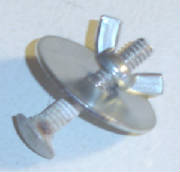
|
| ZINC PLATED BOLT FROM A BIRD MINERAL BLOCK |
WARNING
We have known for many years that metallic zinc is toxic to our birds,
yet some manufacturers still use zinc plated fasteners for food items. The bolt pictured on the left originally held
a mineral block intended to be attached to a birdcage; the zinc plating was defective, however, leading to
corrosion, which had leached into the mineral block.
We also need to be concerned about potential lead contamination.
Many of the toys and perches we buy for our precious avian companions are from China (the PROC), which has demonstrated
little concern about contaminated human toys, let alone toys intended for pets. I'm sure that the problem has diminished,
but, we don't dare forget that, during 2007, according to Consumerist.com, there were 17,181,210 different consumer items, mostly toys of some sort, recalled because of lead contamination. Has human nature miraculously changed between
now and then so that businessmen have suddenly all acquired ethics? Reasonably enough, Consumerist.com refers to that
as an "epidemic." The companies we buy from are in business to make money, and if they can get a product cheaper from
China--which is highly likely these days--then many of them will.
| WINDOW UNIT WITH GRILL REMOVED |
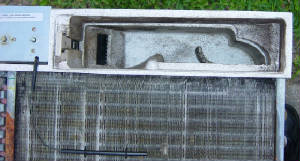
|
|
 |
|
| WINDOW UNIT SEEN FROM TOP |
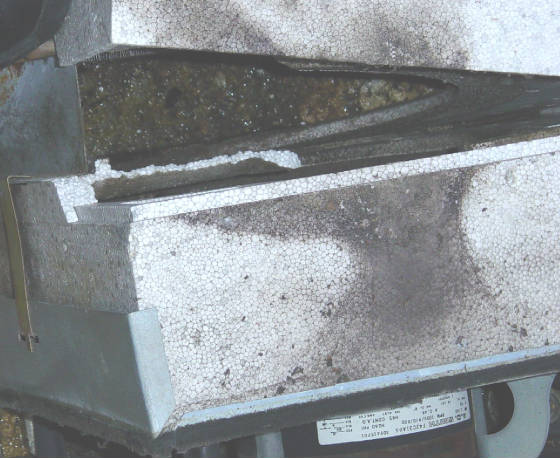
|
| I HAD TO CRACK THE STYROFOAM TO ATTEMPT ACCESS |
WINDOW UNITS:
BREEDING
GROUNDS FOR MOLD
Look
around the air conditioning section of your appliance store. You will notice that many of today's units are made with
Styrofoam® insulation in order to decrease cost and weight per unit. The problem with Styrofoam is that once it
gets moldy, the mold is virtually impossible to get off, and even if there were a suitable way to remove it, the positioning
of the Styrofoam inside the units makes it inaccessible for cleaning. The problem is that these companies use Styrofoam
for the inside air channels in order to reduce cost and weight.
I
wrote one company last year about the issue, and to give you an idea of the intellectual vacuity big corporations
seem to require of their employees these days, the response I got was to send me "instructions...picked up from a website
on cleaning molds," which, of course, begged the question about the inaccessibility of the Styrofoam. (Alas, call
centers and email centers are the main way corporations communicate with their customers these days, less
and less successfully because of a call center mentality, which measures performance on the basis of so-called metrics.)
The
worst offender of my 3 units is the White-Westinghouse; the picture above shows the inside facing of that unit (with
its shroud and front grille removed.) The cold air comes out of the upper part, all of which is lined with Styrofoam.
I have kept it sprayed with huge volumes of a generic Lysol® aerosol (having to do so without Ziggy around because of avian
sensitivity to airborne pollutants), but not all of the Styrofoam is accessible, because it is in back of the front heat exchanger
(the front coils that transfer room heat to the Freon® inside.) Even if it were accessible, Styrofoam cannot be scrubbed
properly.
The larger picture above is of the top after I cracked the Styrofoam to try to gain access
to the inside; to gain enough access to be able to clean it properly, you woud have to destroy most of the Styrofoam, which
is more than an insulator: it helps direct the flow of air. This is a design flaw. The unit's engineer apparently
thought it more important for the unit to be light in weight than for the inside of it to be accessible
and cleanable.
APPEARANCES CAN BE DECEIVING:
To a casual glance,
the pot below would seem to be a very high quality item
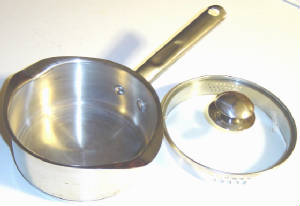
|
| Wal-Mart Wear-Ever pan, made in China |
This is one of Wal-Mart's own branded WearEver® pans. It has the heft and look of an expensive pan, with almost
every feature you could want, including a see-through top and a large rimmed lid complete with strain holes. There are even
different sizes of strain holes on opposite sides of the rim.
BUT: If you look closely enough at the actual pan,
you will see that the handle is riveted to the pan, and there is a gap between the rivets and the body of the pan. (You
can't see the gap in my picture; I don't have a fancy camera.) A little of whatever you cook gets between the rivets
and the wall of the pan, and it is almost impossible to remove. I have soaked the pan in water with and without cleaners for
days at a time, and then tried boiling it, yet residue continues to seep from between the rivet and the pan. I don't
like the idea of using rivets to begin with--they are inherently unsanitary--but cheap rivets? They make the pan useless
for anything but hard-boiling eggs--unless you want contaminates in your food. Oh, and the lid-- drop it once on
the floor and the cheap metal will bend and never be round again.
I found a similar design flaw in a faucet for my kitchen sink, also bought at Wal-Mart. The moveable spigot
does not stay fastened. If I forget to tighten it, which has to be done every few days, the spigot will come off while
I'm using it and water will cascade up to the ceiling. You'll never guess where that faucet was made. The stink
of low quality lingers long after the perfume of low price has vanished.
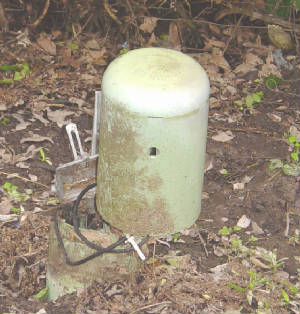
TIME WARNER CABLE:
R.I.P.
Tropical storm Allison drenched Houston in 2001 with as much as
35 inches of rain. The flooding damaged some of Time-Warner's cable system, and although I can understand that they
could not do everything at once, I wonder why it took more than a decade to get the emergency repairs to my cable
box taken care of. That's what you get for living in the poor part of town, I guess. Time-Warner had put in
"temporary" cables that lay on top of the ground for 4 years. Then they got ambitious and at least buried those
cables, but amazingly enough, still left the cable box itself open to the elements. TWC never did remove their
temporary cables; those remained unattended on the ground and apparently forgotten, until what police referred to
as "copper thieves" made off with them in September 2006. TWC never took any action despite numerous complaints to them;
in mid-2007, they left town, having been taken over by Comcast.
FINALLY, in October, 2011, more than 10 years after Allison, Comcast fixed it. I didn't notice the
cable box at first. I was mowing, and the mower encountered a large piece of some kind of cable, which, when I looked at it,
I realized was not electrical or telephone related, but was from the cable tv system. Then I looked over at the cable box,
and, lo and behold, only slightly more than a decade after it had been damaged, they had finally repaired it completely.
Congratulations, Comcast! Comcast is much better than Time-Warner; Time-Warner never did get it done in more than six years,
whereas it took Comcast only a little more than four year.
READ THE LABEL--
READ THE ENTIRE LABEL
I usually scan the label of any processed food I might
consider buying; I'm looking mainly for sodium content and the presence of partly hydrogenated oils. Although
I rarely buy TV dinners, I do have a fondness for Chinese food, which is characteristically more outlandishly high
in sodium than any other cuisine, so I sometimes look at the labels "just in case" a food maker might have gone
sane and be presenting the public with something semi-healthy. I was in a hurry recently, though, and picked up
a product made by Innovasian® Cuisine Enterprises: their Sweet & Sour Chicken With Vegetables. The name,
Innovasian®, is such a clever pun that I made the mistake of assuming that the product was formulated for those of us
who have minds. I was sorely disappointed, and angry at myself for being in such a hurry that I would actually buy the
product.
I had noticed that it had white rice instead of whole
grain, but once in a blue moon that's okay. What struck me was that there was no MSG listed in the ingredients AND
that the sodium content was only 370 mg per serving. Wow! That sounded so good that I stopped reading
the label. The sugar content was high, but I didn't think about it at the time.
The package claims a net weight of 18 ounces, but what you get is
a "sauce" packet that weighs 6 ounces all by itself. What a shock it is to find that the so-called "sauce" is
nothing but sugar, vinegar and water with a few chemicals and dyes added. They don't even have the decency to use actual
fruit juice; compare with the sweet & sour chicken made by Lean Cuisine®, which uses actual orange and pineapple concentrates
for the sweet part. A THIRD of the weight you are paying for with Innovasian is sugar water.
The actual breaded chicken only weighs slightly more than 7 ounces according to my postal scale.
When I was buying the product, I was thinking, "18 ounces, that's
probably about 2 ounces or so of sauce, so I will be getting half a pound each of chicken and vegetables; therefore,
the price isn't too bad." WRONG! It is common practice these days for food makers to make
the sauce or seasoning packets so heavy that what you end up paying per pound for the good stuff is a lot more than
the rough estimate that you come up with when you buy it. I consider this to be a deceptive business
practice. There ought to be a law requiring that the actual weight of such sauce packets be listed on the box.

WHAT ELSE IS IN IT?
The package says "ANGUS BEEF PATTIES 18 - 1/3 POUND PATTIES."
Maybe I'm too simple minded; I was expecting 18 beef patties that weighed a third of a pound each. Until I tasted the
product, and realized that it was not plain beef, the thought never occurred to me to read the ingredient list. Sure
enough, Sam's Club had sold me beef mixed with breadcrumbs
and partly hydrogenated soybean and cottenseed oils.
My love/hate relationship with Sam's Club continues despite disappointments like this. Sometimes they
have hard-to-get, high quality items at a good price. The most annoying thing about them is the way they stop carrying
things with no advance notice. I continue to be disappointed in the functionality of their website also; their so-called
search engine can't even find their own Member's Mark products sometimes.
Due to a separate problem I had with Sam's Club--a pair of glasses
that I could never see out of properly--I joined Costco in 2006 for the sole purpose of getting new eyeglasses (an article
in Consumer Reports had rated Costco as the best retailer of eyeglasses.) Even with the $50 membership fee added, my
glasses still cost less than anywhere else. So far, I like the way Costco does business much better than Sam's, although
some individual items do cost more. I did notice in a CNN report that Costco requires independent testing for bacterial
contamination in its produce, which certainly makes them stand out.
My friends and I often refer to Wal-Mart® or Sam's
Club® as "the Chinese embassy" because of Wal-Mart's effect on America's trade deficit with China. Not that
Wal-Mart is the only one doing it, but the Wal-Mart Corporation all by itself was responsible for 11% of all Chinese
imports in 2006. Wal-Mart has tried to fight the negative publicity generated by the PBS special about Wal-Mart's alleged predatory business techniques by advertising that the average American family saves $2300 each year because of Wal-Mart's
low prices. Yes, we do save money by shopping there, but that $2300 doesn't take into account the inferior quality
of many imports, nor does it take into account the economic costs of the businesses that have been forced to close or the
workers who lost their jobs because Wal-Mart's economic power single-handedly forced companies
to turn to overseas suppliers.
That taken into account, along with Wal-Mart's long standing
fight to keep its employees from organizing, would seem to make Wal-Mart the #1 public enemy of unions. I am totally
unable to grasp how so many unions could have publicly endorsed Hillary Clinton during the 2008 Democratic primaries,
since she served for years on Wal-Mart's board of directors--i.e., on the board of directors of one of their main enemies.
Politics really does make strange bedfellows.
BEE POLLEN
WITH FREE BEE BODY PARTS
I made the mistake a couple of years ago
of trying to get a low price on bee pollen and I bought some at www.bulkfoods.com. Although the price was low, what they sold me was what a local beekeeper later told me was unstrained
pollen, which I had never heard of (or thought about) before. It contained substantial amounts of bee body
parts, rocks and other debris. (At least, I hope the insects were bees and not something else.) Thankfully,
they didn't charge extra for the insect parts. I know, food is a natural substance and you can't get rid of 100%
of the contaminants. Food standards can only call for "less than" a certain amount being present. I didn't
weigh it, so I don't have a number to put on it, but the inconvenience was considerable. I understand that even
the best grades of pollen will contain an occasional pollen-sized rock fragment, which I can handle, but bee bodies and
body parts? No thanks.
CHEAP SUNFLOWER SEEDS
I also bought some bulk sunflower seeds from
www.bulkfoods.com, and the seeds were as bad as the pollen: the worst I have ever purchased. I don't expect perfection;
I know there's always going to be SOME chaff. But fully 16% by weight of their product was waste: chaff,
empty hulls, and an unbelievable number of seeds with insect holes. I cleaned the product and actually weighed
it with a postal scale to get the 16% figure; that's not an estimate.
For that company not to mention the quality
of its products (or lack thereof) is, at best, an error of omission. The fact that something is being sold
in bulk does not have to mean that it is unclean. I never imagined that quality so low even existed.
Maybe this was an isolated instance, I don't know; I would have to have a great deal of reassurance to try them again.
GEORGE'S ALOE VERA
I saw a recommendation on a bird care website for George's "Always Active"® Aloe Vera,
and it sounded good to me, so I purchased some to put in a sprayer to mist Ziggy with. I didn't pay much attention
to the label, contrary to my normal buying habits. Only later did I realize that the product was not aloe vera juice
any more: their "Aloe Vera" is the liquid that has been fractionally distilled from aloe vera leaves.
Fractional distillation is how gasoline is manufactured; it is something that every student has to do as a lab experiment
in introductory organic chemistry courses. What fractional distillation does, in this case, is produce a liquid that
is almost entirely water. In other words, it is a horrible waste of aloe vera plants. I sent the company an
email trying to get them to tell me why they would do this, but they did not respond. Instead of wasting money on this
product, if you want to do your wallet a favor, just buy distilled water.
|
 |
|
|
 |
|
|
 |
|
|
 |
 |
 |
|
|
This is a personal web site, not a business. If you find
any of the information here useful, please consider a donation. Help keep Ziggy the most spoiled parrot in North America!
Thanks.
All content on this site, including pictures, is copyrighted,
©2006 through 2016, by George A. Butel. All rights are reserved; text may be quoted
freely with attribution, but critical commentary must give me the opportunity to reply.
|
Visit our hints for cancer patients Google page, which tells you some of the things I learned during cancer treatment, including
a few things that "they" forget to tell you, such as having to be a little bit "anal" about trying to prevent opportunistic
infections. I never had any during my treatment, so I think my obsession paid off.
LEGAL STUFF
This site has tips and observations about dealing with parrots,
and a few of my own views about human and parrot health concerns. I have a degree in biochemistry, so I am qualified to make
some statements about foods, medicines and supplements, but I am neither a veterinarian nor a physician, and I do
not practice human or veterinary medicine. You should certainly double-check any ideas you might get from me, or anything that
you might construe as advice, by consulting with an appropriate legally licensed professional. All content
on this site ©2006 through 2014 by George A. Butel. If you see any typos or any information that you feel is inaccurate
or ambiguous, please contact me by clicking here.
I use some free Google stuff, including their search, on this site, and they now require that their privacy policy be listed:
Google, as a third party vendor, uses cookies to serve ads on your site.
Google's use of the DART cookie enables it to serve ads to your users based on their visit to your sites and other sites on
the Internet.
Users may opt out of the use of the DART cookie by visiting the Google ad and content network privacy policy.
|
|
|
|



